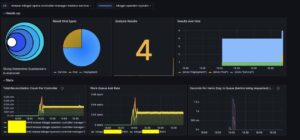Every year between 7,000 and 10,000 million tons of waste are generated worldwide, of which between 300 and 500 million are hazardous waste, meaning they are toxic, flammable, explosive, corrosive, or have biological risk. Countries trade them, and in the last 30 years, the volume of hazardous waste has grown by 500%.
Some of all these remains do not stay in their country of origin and travel through a global network of waste, the world-wide waste web, to be processed elsewhere. There are economic incentives to trade them, however, importing countries often face problems managing them and environmental health issues. Some already show congestion problems when the amount of this waste exceeds the processing capacity.
Now researchers from the Institute of Interdisciplinary Physics and Complex Systems (IFISC, a joint center of the CSIC and the University of the Balearic Islands) have used data from 2001 to 2019 (except 2010) to track the trade of 108 categories of hazardous waste between countries and have developed a mathematical framework to model the world-wide waste web.
28 countries are at high risk of waste congestion, which could potentially cause contamination affecting the environment and human health. This includes Mexico, India, and Uzbekistan, which import large volumes of hazardous waste.
The study’s results, published in the journal Nature Communications, have identified the net exporters and importers of waste and countries with the highest risk of congestion, pinpointing the moment when they reach their carrying capacity and become saturated with a specific type of waste.
In this way, the authors have identified 28 countries at high risk of waste congestion, which could lead to improper handling of the material and potential contamination affecting both the environment and human health. This includes Mexico, India, and Uzbekistan, which import large volumes of hazardous waste.
The data also show that countries like Germany, France, and the United States have shifted from having more balanced waste flows to becoming predominant net exporters, and China has become the main net exporter of hazardous materials.
As countries with the highest chemical pollution produced by waste, China, Mozambique, Senegal, and Afghanistan stand out, with four European countries at medium risk: Ukraine, Bosnia, Belgium, and Bulgaria.
The global waste trade “is, on one hand, to get rid of waste more economically for waste-exporting countries, and, on the other hand, to have easy access to collected materials through recycling of these waste for waste-importing countries. That is why the world-wide waste web is a directional and weighted network, meaning waste travels from country A to country B, but not vice versa or in the same quantity from A to C, for example,” explains Ernesto Estrada, the IFISC researcher leading the work.
This characteristic is evident in the significant asymmetry between importing and exporting hazardous waste among developed countries (typically exporters) and developing countries (typically importers).
To conduct the research, the authors defined a separate network for each of the types of waste analyzed using the Basel Convention on the Control of Transboundary Movement of Hazardous Wastes and their Disposal (BaC) database and compared it with each country’s individual capacity to manage them during the analyzed years.
The capacity to process waste is not equal for all countries, and many of them are at risk of becoming congested, meaning they import more waste than they can handle without compromising the environment. To quantify this, researchers used the Environmental Performance Index (EPI), a ranking indicating which countries are addressing environmental challenges better and providing information on the ability to manage different types of waste.
This index, along with the structure of the world-wide waste web, allows the identification of countries at a high risk of quickly becoming congested if their EPI does not correspond to the amount of hazardous waste they import. Of the 57 countries in this high-risk situation, 29 are in Africa, 16 in Asia, 5 in America, 4 in Europe, and 3 in Oceania.
The impact of these countries at high risk of congestion can be assessed through the analysis of chemical fingerprints, chemical elements generated by waste that leave quantifiable residues in the environment in the form of heavy metals, volatile organic compounds, or persistent organic pollutants.
“Spain is in the safe zone, as are most European countries, as their infrastructure capabilities and environmental track record mean that the flow of waste in and out of them does not pose a high risk of environmental impact,” points out Estrada, “although being in this zone does not mean that a country cannot move to high risk if its waste imports increase beyond its processing capacity.”
Among the 28 highest-risk countries, there are no European countries. However, four European countries are in a medium-risk situation: Ukraine (the studied period does not include the impact of the war), Bosnia, and, to a lesser extent, Belgium and Bulgaria.
Regarding the structure of the world-wide waste web, the study states that the density of connections has decreased between 2001 and 2019, also noting that many countries are becoming either exclusively waste importers (like Mexico) or exclusively waste exporters (like China).
The authors indicate that their study will help evaluate global scenarios on waste and the impacts that some political changes may have, for example, due to the pandemic or import bans. Furthermore, they point out that their work opens the door to more efficient management of hazardous waste to implement measures to ensure better control.
Reference:
Johann H. Martínez, Sergi Romero, José J. Ramasco, and Ernesto Estrada. “The world-wide waste web”. Nature Communications, 2022 TBD. DOI: 10.1038/s41467-022-28810-x
Source: Agencia Sinc
Referrer: MiMub in Spanish










